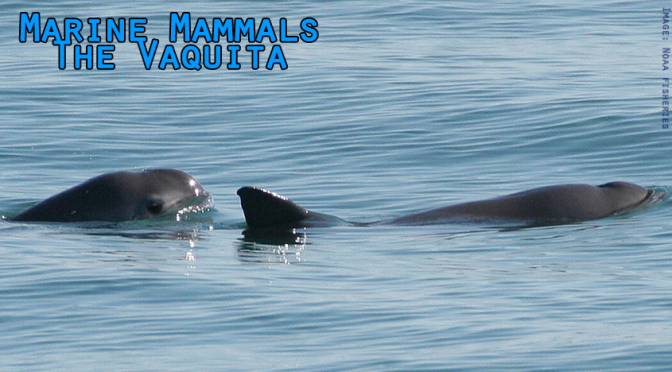The Vaquita porpoise is nearly extinct, now only living in the upper portion of the northern Gulf of California, Mexico, mostly within the Colorado River delta.
Bycatch is the number one threat to marine mammals. Worldwide, estimates of over 650,000 marine mammals perish each year as a result of being bycatch in fishing nets (MMC). This occurs in two ways. Incedental catch of porpoise occurs when the fish accidentally get caught in the fishing nets. Depredation is when you might say the porpoise is an aggressor. It’s when the porpoise remove catch from the fisherman’s nets, often taking fish in significant numbers, affecting the volume and quality of the catch. This leads many fisherman to retaliate by increasing the likihood of porpoise entanglement.
This is an imminent and impending threat to the existence of the species. The population is estimated to be near 30, down from anywhere between 60 and 100 individuals just last year. Accurate estimates are difficult to make for two reasons. We don’t have vaquita acoustic behavior information to make accurate estimates with acoustic collection devices. Vaquita are also elusive creatures, only surfacing momentarily to breath. A risk analysis suggested it would take to 2050 for the species to increase to a population of 245 dolphins if a gill net ban was followed by fisherman(Taylor et al., 2016). Based on recent estimates the wild Vaquita is likely to go extinct by 2018.
This year the Mexican government passed amendments to the penal code and federal law that enables officials to prosecute criminals for crimes against the environment. The punishment can be up to 9 years imprisonment, where previously the punishment could only be fines and seizures. These amendments include stronger penalties for fishing and trafficking the targeted fish species mainly responsible for illegal net use, the totoaba.
However, it seems there is little hope. Enforcement remains an issues in protected waters. Unfortunately, local fisherman don’t care about the laws, as is evidenced by their continued use of the gill nets to catch the endangered totoaba fish for its high priced swim bladder. It doesn’t help that it is also legal to possess gill nets on land and sea.
Now that the species is nearly gone a last ditch effort is being planned. It’s called Vaquita CPR. This involves finding and capturing vaquitas for species preserevation. Among the many search crews that will be involved in the project, the US Navy Marine Mammal Program’s dolphins will assist with the search for the remaining vaquitas. The bottlenose dolphins will use their echolocation to find vaquita clicking sounds. The goal is to capture and place in human care as many vaquitas as possible. Acclimation and evaluation for human care will occur after vaquitas have been placed in pens. Housing and long term care are the goal of the Vaquita CPR project. The project is expected to commence in October 2017. It’s also thought that the dolphins may eventually be released back into the wild.
